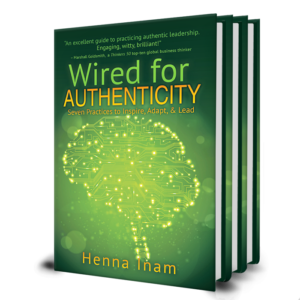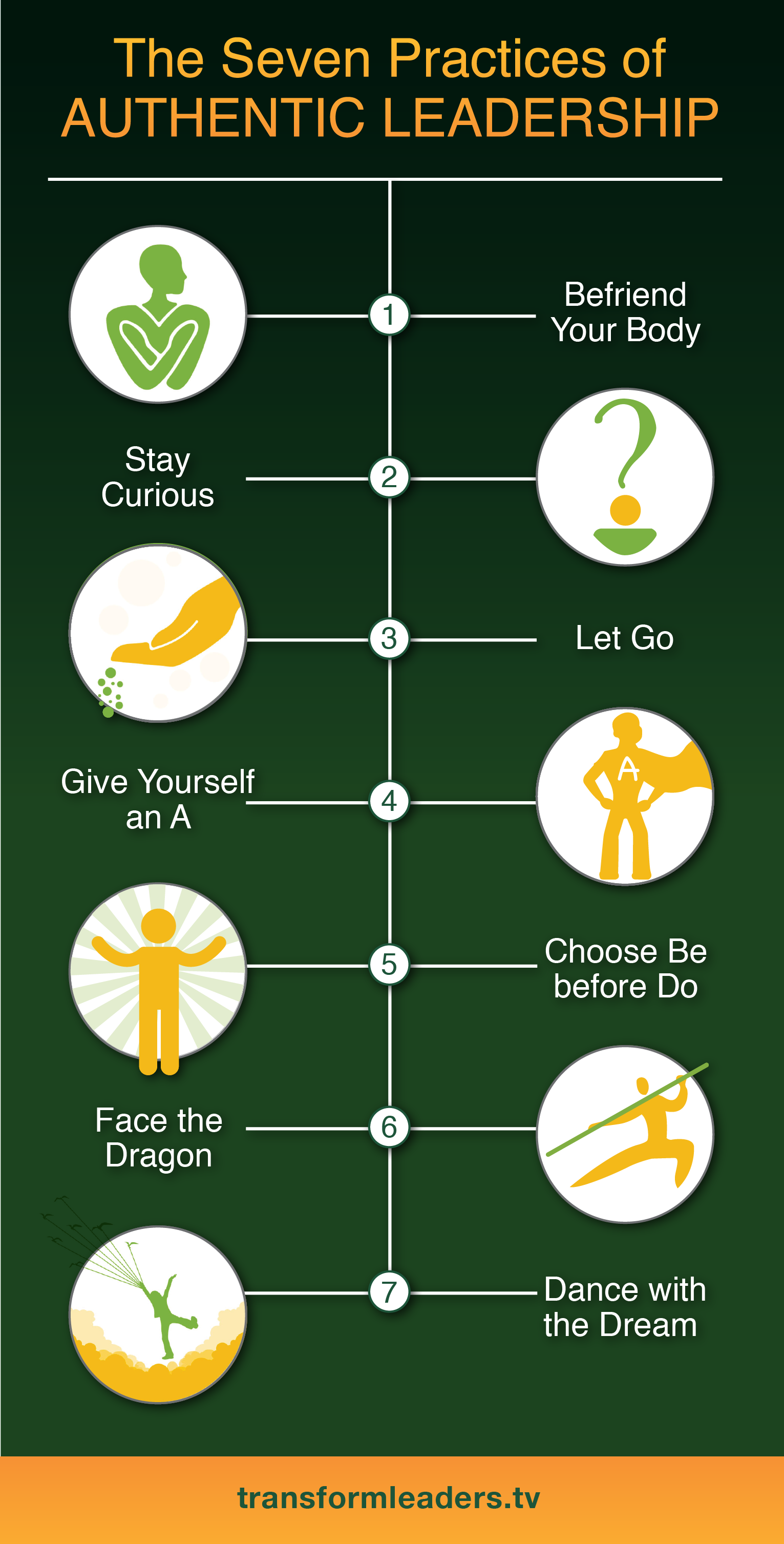Wired for Authenticity
Henna Inam is the CEO of Transformational Leadership Inc. Her new book, Wired for Authenticity: Seven Practices to Inspire, Adapt & Lead, serves as a touchstone for leaders who seek both authenticity and adaptability in a 24/7 dynamic, fast-paced workplace.
I recently had the opportunity to ask Henna about the practices necessary to lead with authenticity.
Practice 1: Befriend Your Body
Why do you start with the physical? How important is it to connect and befriend our bodies?
Befriending our bodies is foundational to the practice of authenticity. I define authentic leadership as the fullest expression of “me” for the benefit of “we.” In order for us to fully express our true selves, we need to know who we are – to experience what brings us joy, when our fears hold us back from full self-expression, and know what triggers prevent us showing up in our authentic selves. The truth of all of these questions lies in our bodies. In my executive coaching work, I use Whole Body Leadership ™ to get us connected to our bodies to give us answers to these questions. Our bodies can be great enablers because they can help us move in a direction that we know is right by transcending our fears and discomfort through breath, posture, and movement.
Practice 2: Stay Curious
How do we “stay curious”?
Staying curious is critical in a world that is rapidly changing. Our brain likes to operate on assumptions to make the decision-making process easier. We make assumptions about people in the form of quick judgments. We often only see what we believe. Staying curious is about constantly asking ourselves and others broad, open-ended questions such as, “What’s happening now?” or, “What do you see here?” or, “What’s new? What’s changed?” and being open to new learning.
Practice 3: Let Go
Letting go is not always easy. What tips do you offer to let go of what is limiting us?
The first step to letting go of what limits us (often our inner saboteur thoughts and behaviors) is to practice staying curious about ourselves. Once we’ve identified a place we’re stuck, we can ask ourselves, “Who am I being here?” Often it is a certain perspective on a situation or an attitude we are holding that keeps us stuck. It’s often based on assumptions we weren’t even aware of. Once we’ve identified these, we can consciously choose a different perspective, assumptions, or way of being that will get us closer to our goals. Neuroscience shows us how our body can be used to help us change our minds, so moving our body can help us to let go.
Practice 4: Give Yourself an A
Appreciating ourselves, even our flaws, is not always natural. What would you say to someone who regularly beats him or herself up?
I would tell them to “stop it!” … it’s easier said than done. I know this from personal experience of course. I have an inner high-achiever judge who I call Flog Me Now. Her motto is, “The flogging will continue until morale improves.” The morale never really improves when she’s around! I work with my executive coaching clients to get out of their heads when their inner saboteurs are sabotaging them – and get into their bodies. We use Whole Body Leadership ™ to shift our perspective, get out of our heads, and offer ourselves self-compassion rather than self-judgment.
Practice 5: Choose Be Before Do
Be versus do. Inspiration versus fear. What’s the best way to reorient our thinking along these lines?
It starts with getting curious and asking, “Who am I being right now? Am I acting from inspiration or fear?” Who we are being is constantly changing. This is why authentic leadership is a moment by moment practice. In our 24/7 connected, rapidly changing work environment, we are constantly doing – without slowing down and getting curious about who we are being (the attitude, mindset). We need to slow down, be more mindful and ask ourselves the question, “Who am I being right now?”

Practice 6: Face the Dragon
Some people don’t like conflict, so “facing the dragon” may be the most difficult of all. What strategies work best for people who would rather do anything than face a difficult situation?
Unfortunately staying in our comfort zone has a price. The price is our own aliveness. When we avoid a difficult conversation or situation, we remain stuck and slaves to our own fears. In working with my coaching and workshop clients, I show them how to practice transcending their fears. We discover what inspires us that is more important to us than our fears. Even when we are fully grounded in that inspiration, we will still have fears. That’s when we practice using our bodies, posture, and breath to get us through that discomfort. The more we practice, the more neural pathways we create to transcend our fears.
Practice 7: Dance with the Dream
How do you encourage people to dream big?
 One of the seven practices of authenticity I talk about is “dancing with your dream.” So many of us believe that our work is about earning a paycheck, and the expression of our dreams lies elsewhere. I encourage my clients to dance with their dreams in the workplace, to create cultures where we are all doing that so that we bring our full energy, inspiration, and expression to our work.
One of the seven practices of authenticity I talk about is “dancing with your dream.” So many of us believe that our work is about earning a paycheck, and the expression of our dreams lies elsewhere. I encourage my clients to dance with their dreams in the workplace, to create cultures where we are all doing that so that we bring our full energy, inspiration, and expression to our work.
I am creating a movement for greater authenticity in the workplace and invite you to join our movement. You can find more resources to do that here. You can take an assessment or start an authenticity practice circle or sign up to receive an authenticity at work tool-kit.
Wired for Authenticity: Seven Practices to Inspire, Adapt & Lead

